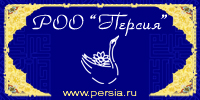For all, who are interested in the Orient
Oriental Collection № 3/2015
 |
-
A photo essay «The Gobi» by Svetlana Sysoeva opens the third issue of 2015.
-
Yulia Ershova. The World Tree of Sumatra Batak. During their trip to the island of Sumatra the scientific staff of the Museum of Traditional Arts of the People of the World «Tradart» got acquainted with the culture of Batak — a unique nation, who has preserved to present day some ancient customs. Due to the expedition the collection of the New Moscow Museum is replenished with new artifacts.
-
Olga Lebedeva. Yōga and nihonga. During the Meiji period Japanese artists became acquainted with European painting and even tried to paint in the European style. However, oil painting was unable to organically fit into Japanese artistic tradition. A tough juxstaposition of Japanese traditional genres (nihonga) and painting in the Western style (yōga) was perceived as the norm.
-
Amir Khizamutdinov. Russian seasons in China. Russian masters of theater arts have left a bright trace in the cultural history of Harbin, Shanghai and Tianjin. Having been severed during the years of exile from their native soil, they continued to delight audiences with performances of dramatic works, operas and ballets.
-
Yuriy Zinin. Russian dervish; Andrey Shugaev. 550 paintings of Alexander Rubtsov. During World War I a novice Russian artist Alexander Rubtsov came to visit Tunisia and stayed there forever. The brightness of the sun, sophisticated colors, combining evergreen with the ochre of the desert and the turquoise shades of the sea, captured his imagination. The paintings of the artist are in high demand at auctions. About the work of the distinctive artist is the story of the authors of two articles.
-
Svetlana Ryzhakova. Wooden wonders of Vijayanatha Shenoy. In the town of Manipal in the Indian state of Karnataka, there is a remarkable open air museum, created almost by one person and is not yet completed. It presents traditional Indian houses and household items. «The construction of the Heritage and Craft Village is almost complete, the author writes. — However, to open it for visitors, there is still a lot of work to do».
-
Pavel Kuzenkov, Konstantin Panchenko. Why the Arab conquests were successful? Who has not been impressed by an implausible, supernatural lightness of the Arab conquests of the VII century? The authors consider one of the slices of this problem — the ratio of military power of the Arab tribes and the opposing them Byzantium and Iran.
-
Svetlana Khrutskaya. Love and espionage in the Modern Age. The author of the article managed to recover the details of the incident, occurred in the early 20th century. Takeo Hirose, a Japanese military attaché (i.e. a spy by definition) who served in St. Petersburg, fell in love with Ariadna, a daughter of a Russian Colonel Kowalski, a specialist in mine science...
-
Tatiana Soloviyova. Sacred couch of the goddess Ishtar. The rite of the sacred marriage of the gods, the main ritual of the temples of the Ancient East, has brought to life the legend on depravity of the cult of the most ancient of the goddesses. The Sumerians called her Inanna, the Phoenicians — Astarte, among the ancient Hebrews she was known as Ashtoreth and for the Syrians she was Atargatis. But other more common was her Akkadian name Ishtar.
-
Tatiana Filatova. Who and why brought the Diamond Throne to the Russian Tsar. The head of the trade delegation that delivered the Diamond throne to Moscow, was the representative of the largest in Iran Trading company of the Sharimanyan. In fact, this transaction marked the beginning of the Iran-Russia trade relations. The author of the article focuses on the fate of the Armenian community in Isfahan.
-
Olga Khizhnyak, Ekaterina Teryukova. «Three teachings» in Chinese folk paintings. The State Museum of the History of Religion has a unique collection of Chinese folk paintings (popular prints) from the collection of Academician Alekseev, numbering about a thousand sheets. The authors of the article analyze the religious content of some works.
-
Irina Vinokurova. The crossroad of three religions. The village of Abu Ghosh, on the outskirts of Jerusalem, was known in the 19th century as the nest ofrobbery. Now Abu Ghosh, where peacefully coexist three great religions, demonstrates to the world its open and hospitable character.
-
Asya Petrichenko. Paper dragon, soaring in the sky. Vietnamese art of paper cut-outs was strongly influenced by Chinese tradition. However, over time there emerged a national artistic style.
-
Marina Bakanova. Mysterious baryani. Pakistani pilaf baryani is very popular. This is a layered rice dish, where meat and rice are cooked separately until almost done and then the dish itself is prepared by alternately spreading layers of meat and rice. The author of the article shares the ways of its cooking with readers.







